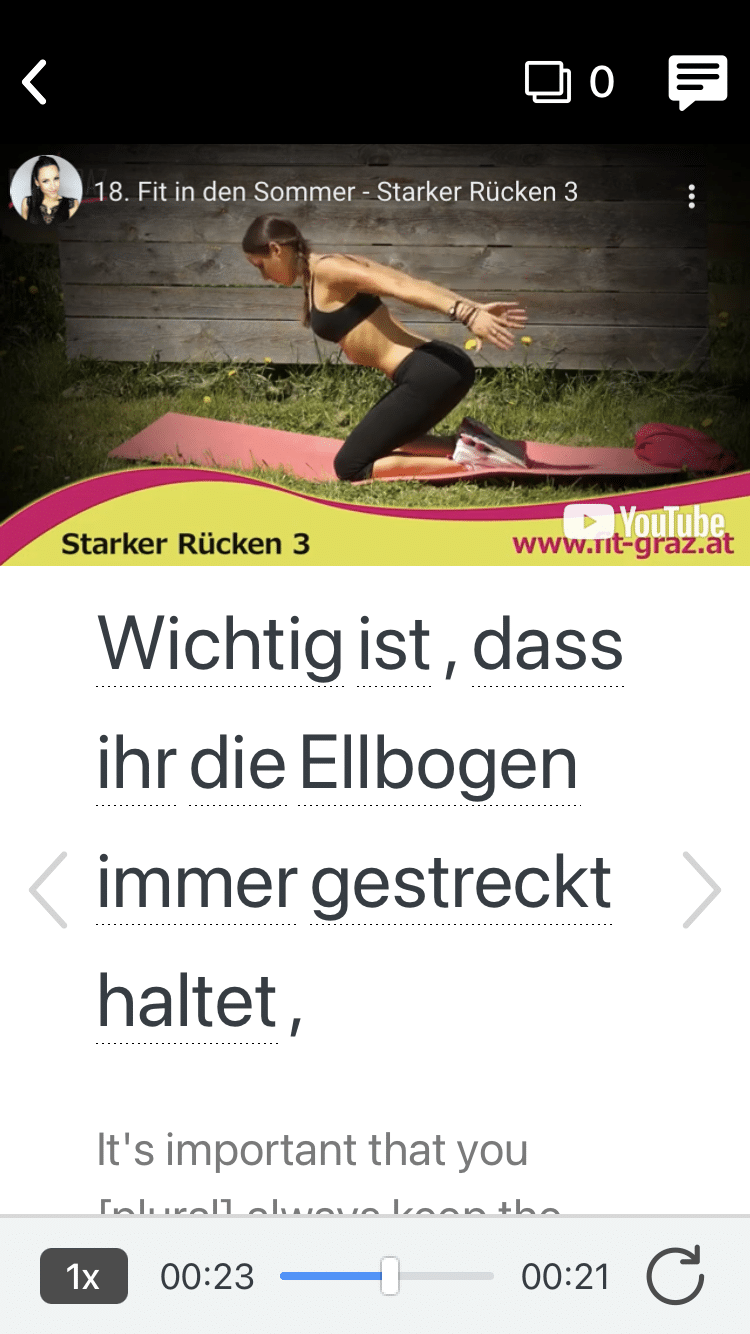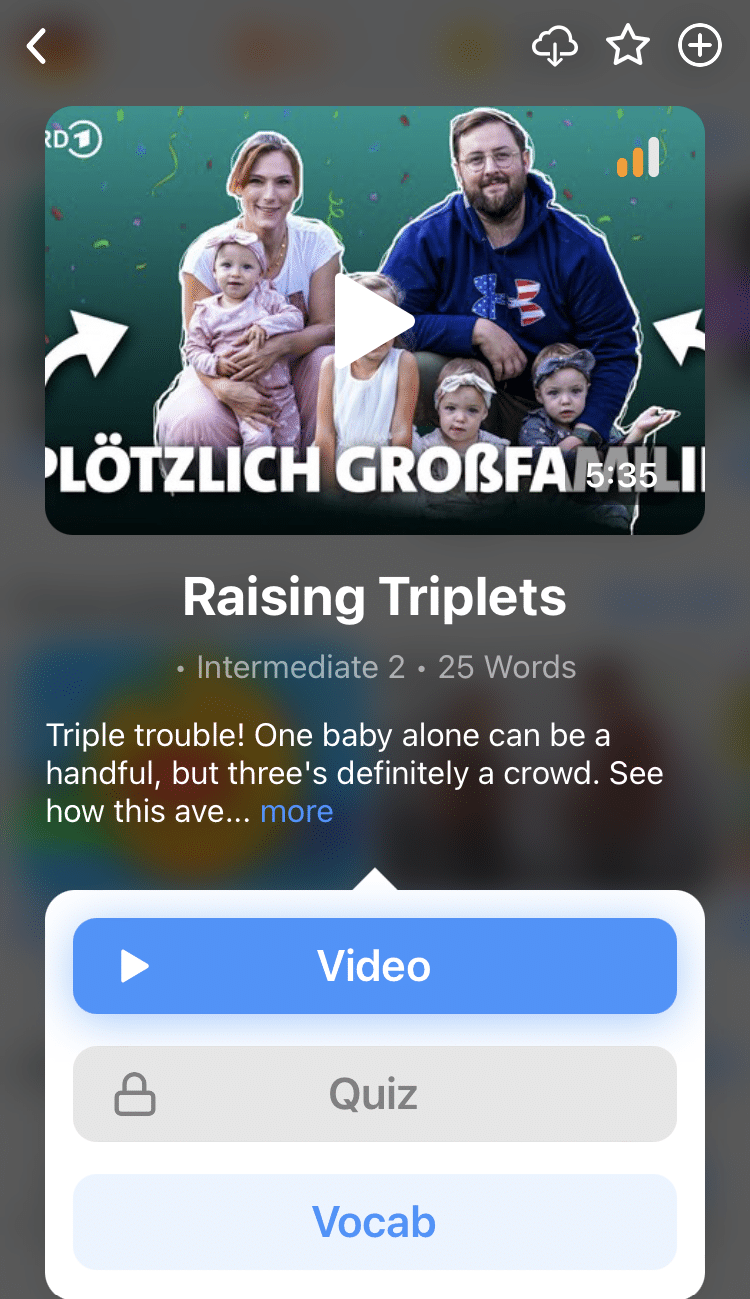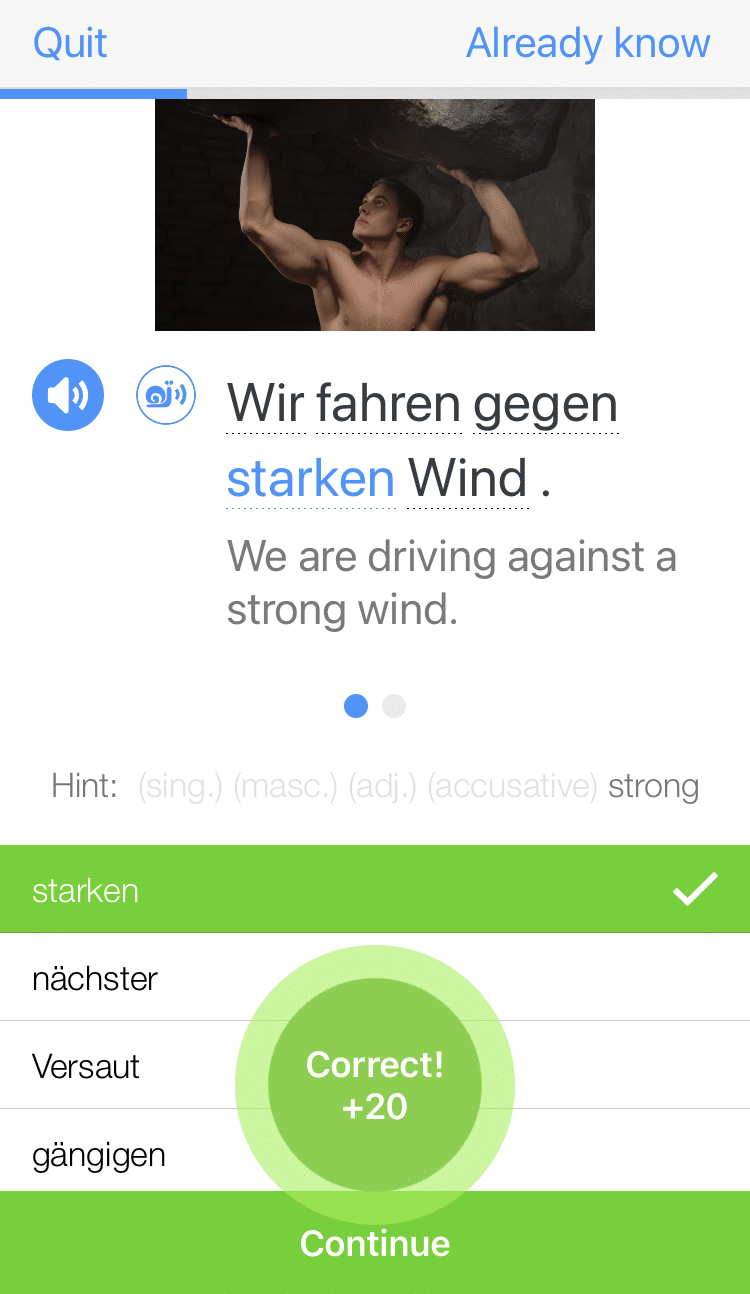
Learn How to Tell Time in German with 30+ German Time Words
An important part of learning German is being on time!
For your lessons, for the train, for a date. So it’s super important to make sure you know how to communicate the time in German.
It’s as easy as knowing the right German time words.
Check out these words, phrases and expressions you need to know to speak about time and ask what time it is in German… right now!
Contents
- Basic Vocabulary for Telling Time in German
- Telling the Time in German
- How to Ask What Time It Is
- Additional Tools for Learning How to Tell Time in German
- And One More Thing...
Download: This blog post is available as a convenient and portable PDF that you can take anywhere. Click here to get a copy. (Download)
Basic Vocabulary for Telling Time in German
Learn German numbers from 1 to 59
Although I highly recommend practicing all numbers, anything over 59 is not used when telling time. The goal here is to commit the German numbers from one to 59 to memory. That way, you won’t be fumbling around thinking about numbers instead of telling the time quickly.
Here’s our recommended way to learn how to count in German, including resources and tricks for remembering these common numbers.
Common German time words
Germans use a wide range of phrases for telling and reading time. From phrases for “a quarter after” to phrases for telling someone exactly when you would like to meet them for a conference.
The most important words are the following:
Uhr — O’clock (used to denominate full hours)
um — at (as in “Let’s meet at four o’clock”)
vor — before
nach — after
viertel — quarter (as in “quarter past” or “quarter to”)
halb — half
morgens — in the morning
mittags — at noon
nachmittags — in the afternoon
abends — in the evening
nachts — at night
You can also see the different ways that German native speakers describe time on FluentU.
FluentU takes authentic videos—like music videos, movie trailers, news and inspiring talks—and turns them into personalized language learning lessons.
You can try FluentU for free for 2 weeks. Check out the website or download the iOS app or Android app.
P.S. Click here to take advantage of our current sale! (Expires at the end of this month.)
How to use the 24-hour Clock
It’s important to know that Germany uses a 24-hour time system, or what is referred to in the U.S. as “military time.”
In casual German conversation, people often stick to the 12-hour time telling method. For more formal purposes, 24-hour time is the standard.
For the quick calculation, take the time in the p.m. that you’re trying to say, and add 12 to it. For example:
dreizehn Uhr einundzwanzig — 13:21 (1:21 p.m.)
zwanzig Uhr fünfundvierzig — 20:45 (8:45 p.m.)
dreiundzwanzig Uhr elf — 23:11 (11:11 p.m.)
neunzehn Uhr neun — 19:09 (7:09 p.m.)
Interestingly, viertel and halb aren’t used with 24-hour time. Instead, use the specific time or revert back to a 12-hour clock system.
Need more practice? Change your phone and computer to 24-hour time for super quick learning.
Telling the Time in German
How to state time on the hour
One of the most common ways to tell time is right on the hour. Use the following phrase for these situations:
Es ist ~ Uhr. — It’s ~ o’clock.
Once you have this phrase locked into your brain, simply plug in the number required.
For example:
Es ist acht Uhr. — It’s eight o’clock.
Es ist zehn Uhr. — It’s ten o’clock.
Es ist ein Uhr. — It’s one o’clock.
Note: Keep in mind that with time you say ein as opposed to eins.
How to state time before and after the hour
Now that you know the numbers and words for before and after the hour, you can plug those into a common time-telling phrase.
Let’s go over a few common phrases:
Es ist Viertel nach… — It’s a quarter past…
Es ist Viertel nach sieben. — It’s a quarter past seven.
Es ist Viertel vor… — It’s a quarter to…
Es ist Viertel vor zwei. — It’s a quarter to two.
Es ist halb… — It’s half an hour before…
Es ist halb sechs. — It’s half an hour before six.
The German half-hour is slightly different. Instead of saying it is half past the last full hour, the language looks ahead to the coming one and expresses that it’s already halfway toward that time.
So instead of saying that the time is half past 10, you would say that it’s halfway 11.
As you can see, Uhr is left out of the sentences above. There is no such thing as viertel nach drei Uhr. If it’s clear from the context, you can even omit the hour altogether. If your interlocutor is sort of aware about the hour of the day, zehn vor halb or viertel nach can be entirely sufficient.
In everyday speech, Minuten are often omitted (as is Uhr). However, this is more common when stating even minute intervals such as five past, 20 to and 10 to, though uneven numbers are also possible.
Es ist siebzehn nach eins. — It’s seventeen past one.
Zwanzig vor sieben. — Twenty to seven.
Fünf vor zwölf. — Five to twelve.
How to state time at 5-minute intervals
There are some conventions as to how to tell time around the hour.
Thresholds exist at which the expression of time changes. Typically, you’ll use nach and state the minutes until 25 minutes past the full hour. In that case it becomes fünf Minuten vor halb .
Likewise, you’ll say fünf nach halb at the 35-minute mark and not fünfundzwanzig vor. You then switch to the vor format when it strikes 20 minutes before the full hour.
If we go around the clock in five-minute steps, it looks a little bit like this:
fünf nach zwölf — 12:05
zehn nach zwölf — 12:10
viertel nach zwölf — 12:15
zwanzig nach zwölf — 12:20
fünf vor halb eins — 12:25
halb eins — 12:30
fünf nach halb eins — 12:35
zwanzig vor eins — 12:40
viertel vor eins — 12:45
zehn vor eins — 12:50
fünf vor eins — 12:55
Talking about time
Here are some more ways you might see time used in full sentences.
Um viertel nach vier am Nachmittag. — At a quarter past four in the afternoon.
Es ist schon viertel vor neun?! — It’s already quarter to nine?!
Wir treffen uns um halb zehn. — We will meet at half past nine.
Jetzt ist es halb vier. — It is now half past three.
How to Ask What Time It Is
Since you’re just as likely to ask about the time as someone is to refer to you about it, a wise first step is memorizing this phrase:
Wie viel Uhr ist es? — What time is it? literally: how much o’clock is it?
Other common ways to ask for the time are as follows:
Wie spät ist es? — literally: how late is it?
Kannst Du / Können Sie mir sagen wie spät es ist? — Can you tell me what time it is?
Hast Du / Haben Sie die Uhrzeit? — literally: Do you have have the time? (This one is a little old fashioned.)
Additional Tools for Learning How to Tell Time in German
You can practice your German time telling skills with these online tools and resources:
- Video on How to Tell Time in German — Although much of the content in this video is covered in this article, it helps to see a clock and hear some people talking about how to say common time phrases like “Es ist Zwölf Uhr,” (It’s 12 o’clock) or “Wie viel Uhr ist es?” (What time is it?)
- Another Handy Video for Time in German — Besides the fact that the “Get Germanized” YouTube channel is filled with awesome videos for you to learn from, this one has a friendly host with a simple and intuitive learning process. The host compares English and German time telling, and he includes text on the screen so you can read the phrases.
- German Time Quiz — The About.com German page offers a simple, 10-question quiz to test your knowledge and further learn how to tell time. After you go through the test, ask for your score to see how you did.
- Learning German Numbers — As you’ll notice in our steps below, number knowledge is required before learning to tell time in German, so this page covers common time-telling numbers, along with some pronunciations.
Now that you’ve got those German time-telling words and phrases down, it’s time to go out there and use them!
And One More Thing...
Want to know the key to learning German effectively?
It's using the right content and tools, like FluentU has to offer! Browse hundreds of videos, take endless quizzes and master the German language faster than you've ever imagine!
Watching a fun video, but having trouble understanding it? FluentU brings native videos within reach with interactive subtitles.
You can tap on any word to look it up instantly. Every definition has examples that have been written to help you understand how the word is used. If you see an interesting word you don't know, you can add it to a vocabulary list.
And FluentU isn't just for watching videos. It's a complete platform for learning. It's designed to effectively teach you all the vocabulary from any video. Swipe left or right to see more examples of the word you're on.
The best part is that FluentU keeps track of the vocabulary that you're learning, and gives you extra practice with difficult words. It'll even remind you when it’s time to review what you’ve learned.
Start using the FluentU website on your computer or tablet or, better yet, download the FluentU app from the iTunes or Google Play store. Click here to take advantage of our current sale! (Expires at the end of this month.)







